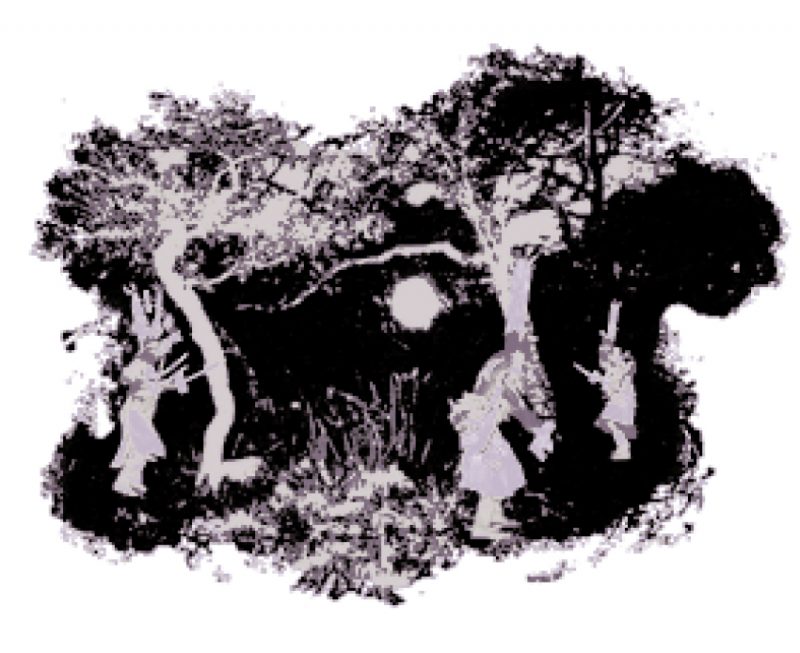DIRECTIONS:
In North Carolina, drive on Highway 181 west of Morganton about twelve miles through the Pisgah National Forest to the overlook at milepost 20.
Look low, towards the valley of boulders before Brown Mountain: the lights begin in the trees here, as great basketballs of fire. Flaring and creeping along the long, low mountain ridge, they appear pale pink on occasion, or halogen yellow, or sometimes a brilliant, blinding blue-white. Look quickly: they flit in and out of the trees and shoot up horizontally into the sky in a matter of seconds, disappearing into the night sky, their trails a dull match-tip red.
According to an account in the Charlotte Observer in 1913: “Many have scoffed at this ‘spooky’ thing, and those members of the Morganton Fishing Club who first saw it more than two years ago were laughed at and accused of ‘seeing things at night’ as a result of a common human frailty.” In 1962, the Observer reported that a witness to the lights was struck with an overwhelming sensation of dizziness as the ball of light appeared to approach him. It made a sizzling sound, he said.
The Brown Mountain Lights are best viewed on clear fall nights, although sometimes you may not see them at all. Perhaps they feed on approval: like an animal repeating a praised trick for an audience of stoned campers, vacationing families, and a nerdy paranormal researcher or two, A/V equipment at the ready. Sometimes only a few of them show, sometimes dozens and dozens, ghosting the horizon, palpable yet ethereal, vanishing as quickly as they came.
Are they real? Is some farmer having a good laugh as he shines his flashlights over the highway? Get a load of those jokers over there on the ridge, he says, nodding his head at the dim, but rapt figures collected on the horizon, and elbowing his two kids, their arms growing limp and tired from circling their own flashlights. Daddy, it’s two in the morning. We’ve got school tomorrow.
Descendants of Catawba and Cherokee Indians perceived the lights as the spirits of wives and lovers left behind after the epic battles of the thirteenth century, endlessly searching for their slain warriors. The first written record of the lights appeared in the journals of the German engineer Gerard Will de Brahm in 1771, who concluded that Brown Mountain emits nitrous vapors that, when mixed with the wind, produce the strange globes of light. But everyone forgot soon enough about de Brahm, and another hundred years later, they were telling ghost stories again.
The favored tale revolves around a cheating, evil-tempered husband named Jim, who allegedly arranged for the murder of his charismatic and pregnant wife Belinda. The night before Belinda’s and her child’s remains were finally uncovered in a ravine, lo and behold, a series of eerie, elusive lights appeared on Brown Mountain.
They have inspired band names, been immortalized in bluegrass songs, and...
You have reached your article limit
Sign up for a digital subscription and continue reading all new issues, plus our entire archives, for just $1.50/month.
Already a subscriber? Sign in





